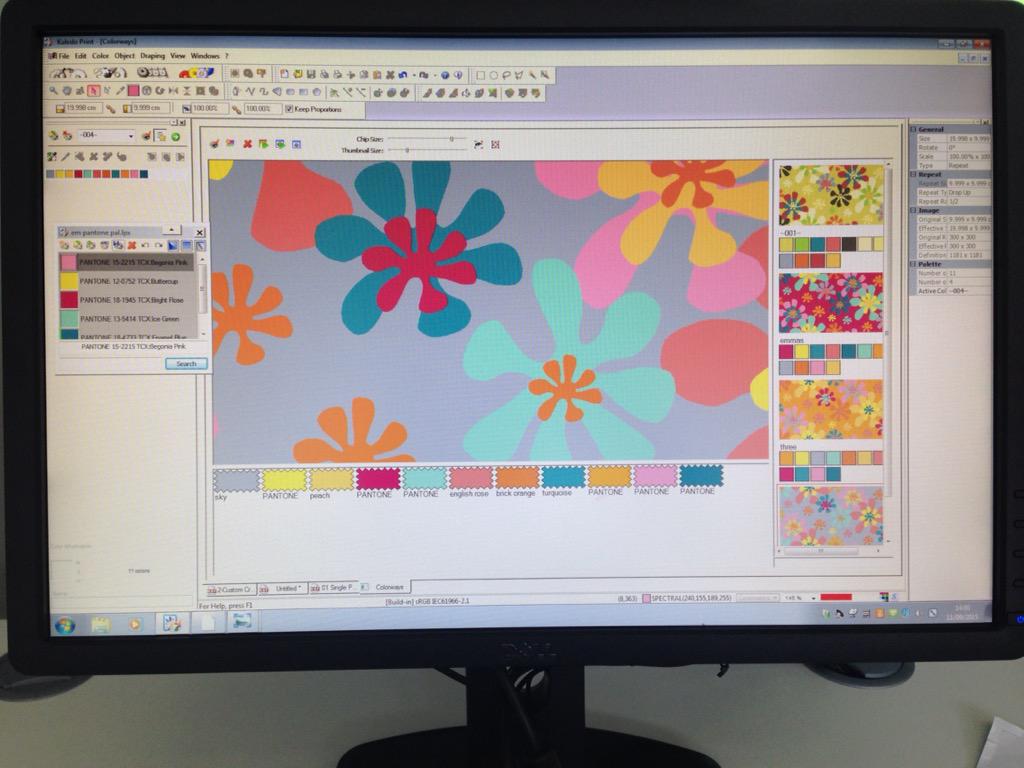Lectra Kaledo For Pc

May 24, 2015 The Lectra vigiprint apparel software is the product of lectra kaledo is used for inputing & managing plotting files batches intended for a group of plotters, printers & small Lectra laser cutters that is interlinked to the station by an Ethernet netjob. These marker plotting files design are.

When you think of computer-aided manufacturing, sexy lingerie is probably not the first thing that comes to mind. Scooby doo sinhala cartoon free download. But since the 1990s, fashion companies, including those that make delicates, have been employing the kinds of computer-aided design and computer-aided manufacturing, or CAD/CAM, software previously reserved for architects, designers, and engineers. While pin-bearing seamstresses and mannequins are still used for couture, the maker of clothing bought off the rack is more likely a piece of software. The recent introductions of artificial intelligence, better animation, and lifelike avatars are helping fashion companies, faced with increasing demands, to more quickly translate 3D visions into 2D materials. Teenagers are demanding cheap 'fast fashion' to go with their fast food, and there are now six or eight fashion 'seasons' put out by some clothing lines that look to bring new clothes into stores every two months, said Holly Beum, director of software product management at Gerber Technology, a subsidiary of the publicly traded Connecticut-based company.
'We even call our product life cycle management software 'fashion life cycle management' because fashion differs from every other industry, in that we'll have six seasons in a year with thousands of products,' Beum said. 'If you're building an airplane, you have one product that takes most of a decade (to design). How many prototypes of an airplane are you really going to make?'
Please ensure you read any forum rules as you navigate around the board. • • Za prijavo se morate najprej registrirati. More login info. Testi po biologii 6 klass s otvetami ponomareva movie.
There are two leading companies offering software in this area. Gerber, originally known for its cutter textile machines, lists such clients as Gap, Liz Claiborne, Levi's, Carter's, Sears, Abercrombie & Fitch, and OshKosh. Lectra is a Paris-based company whose clients include Benetton, Calvin Klein, Christian Dior, Dolce & Gabbana, Fruit of the Loom, Eddie Bauer, and Gucci. Lectra and Gerber each offers modular software packages, designed to meet specific fashion industry needs, that generally range between about $3,000 and $20,000 per seat depending on what modules are included.
Both companies offer programs that focus on design, 3D prototyping, pattern making, size grading, nesting of the pattern pieces to maximize use of materials, and integration with automated textile-cutting machines. 'The smaller the organization, the more the person is required to do multiple things and use multiple or many of the pieces of software,' said Jerry Inman, vice president of marketing for Lectra.
The software lets companies offer buyers more realistic previews on virtual models before things go into prototyping or production. And fashion engineering even extends into the marketing and brand-creation side of the business. Lectra, for example, in March released Kaledo 3D Trend, an application it developed with Microsoft to work on the Vista operating system.
It allows designers to create 3D animated storyboards from their designs complete with virtual models, photos, audio, and video. The company gives away for free, and has seen a lot of interest from fashion design students. Gerber offers V-Stitcher, a module for its AccuMark CAD program that lets designers evaluate how a piece of clothing will fit on a person by using virtual models. Lectra offers a similar product, Modaris 3D Fit, for letting designers see the fit and movement of a design in 3D and then translating that design into the 2D patterns. Tailored for globalization CAM software meshes well with globalization trends. Since the artificial intelligence in pattern-making software requires only the input of measurements, not information on how the garment is to be constructed, manufacturers are free to have their clothes made by labor anywhere in the world, Beum said.